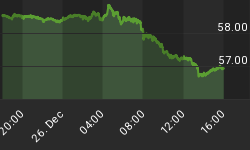Despite ongoing Brexit woes and growing uncertainty, UK startups have been attracting more venture capital funding than their European counterparts ever since the decision to exit the EU. While tech companies have been receiving the lion’s share of funds, a few notable consumer goods companies have benefited as well. One such company is London-based fashion e-commerce platform, Farfetch Ltd, which received a $397 million investment from China’s e-commerce giant, JD.com, in 2017.
And now, Farfetch has decided to bring the bounty Stateside.
The fashion unicorn has filed for a U.S. initial public offering on the New York Stock Exchange. At least nine banks including JPMorgan, Goldman Sachs, Allen & Co. and UBS are on tap to underwrite the deal, although the company’s prospectus has not divulged the share float or a price range. There are rumors, though, that the listing could give it a valuation of around $5 billion.
Here are four important things to know about the company:
#1 Dual-Class Stock Structure
Google’s parent company Alphabet and Berkshire Hathaway are well-known companies that employ a dual-class structure. The different classes of shares usually have different share prices and, more importantly, confer varying voting rights to their holders with the founders commanding higher voting rights.
The same scenario will apply to Farfetch, with the company issuing Class A and B shares. Class A shares will have a single vote per share, while Class B will command 20 votes per share and the ability to be converted to Class A at any time.
Founding CEO José Neves is expected to maintain a controlling stake via Class B shares, which will give him plenty of sway in the company’s management. So don’t buy Farfetch shares hoping to one day have a big say in the way things are run or even becoming majority owner. The prospectus makes that abundantly clear:
“Our dual-class voting structure will limit your ability to influence corporate matters and could discourage others from pursuing any change of control transactions that holders of our Class A ordinary shares may view as beneficial.”
#2 It’s a Tech Company
“We are a technology company at our core and have created a purpose-built platform for the luxury fashion industry,” the prospectus gushes. Related: Gold Jumps As Trump Tweet Sends Dollar Diving
The company says it was created a decade ago with the aim of “redefining how fashion is bought and sold through technology, data and innovation.’’
Which probably makes sense when you consider the pedigree of its founder. Neves has a background in coding.
#3 Operates in a Highly Fragmented Market
The market for luxury goods is highly fragmented, with 19 of 20 largest luxury fashion brands headquartered in Europe but serving a global market through a network of directly operated stores or by selling their products through department stores.
At the same time, there’s an emerging trend of younger consumers from new geographies who are becoming a major market segment. For instance, Millennial and Gen Z online shoppers from China, the Middle East, Eastern Europe and Latin America are expected to account for 45 percent of luxury-category spending come 2025. Sellers and consumers from all over the world connect on the Farfetch Marketplace, an ecosystem of apps, services and data.
#4 High Revenue Growth but No Profits
The company says that about 90 percent of its revenue comes from the Farfetch Marketplace. And it’s seeing lots of growth, too: The company had 935,772 active consumers by the end of 2017,a nice 44-percent increase with gross merchandise volume increasing 55 percent to $909.8 million, while revenue expanded 59 percent to $386 million.
Prospects for future growth are bright as well, with Bain Co. predicting that the global market for personal luxury goods will grow from $307 billion last year to $446 billion in 2025.
Unfortunately like many startups, Farfetch is yet to post a profit. For the first six months of the year, the company reported an after-tax loss of $68.4 million on sales of $267.5 million compared to a loss of $29.3 million on sales of $172.6 million during last year’s comparable period.
By Alex Kimani for Safehaven.com
More Top Reads From Safehaven.com

















